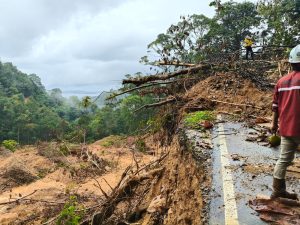Jakarta – The Institute for Energy Economics and Financial Analysis (IEEFA) has revealed in its latest analysis that dependence on gas could potentially cost the country billions of dollars over the next decade.
“Continued reliance on fossil fuels like gas could cost Indonesia around USD60 billion from 2025 to 2034,” Mutya Yustika, IEEFA’s Energy Finance Specialist, wrote in a briefing note on Monday, 23 June.
The plan to add 10.5 gigawatts (GW) of gas-fired power plants in the 2025-2034 Electricity Supply Business Plan (RUPTL) is considered to pose a long-term financial crisis for Indonesia.
IEEFA data show that the current cost of electricity generation is IDR1,732/kWh, while the average tariff paid by consumers is IDR1,153/kWh, a difference that is covered through government subsidies and compensation. In 2024, the allocation of subsidies and compensation for PLN even reached IDR 177 trillion, a 24% increase compared to the previous year.
Mutya cautioned that if the additional power plant projects go ahead as planned in the RUPTL, the national electricity generation cost could double by 2034, which would put extra pressure on the state budget and consumers.
The global gas market remains unstable, with frequent price spikes that have historically made gas twice as expensive as coal, as reflected in PLN’s financial statements. “If Indonesia proceeds with another large-scale gas infrastructure expansion, it risks getting trapped in long-term financial commitments,” he said.
Power plant capacity not optimised, renewable sources excel
IEEFA highlights that many of the power plants built since 2018 are not optimally utilised. Of the 6.3 GW of additional PLTG capacity, utilisation by 2023 is expected to reach only 30%. Factors such as high gas prices and limited supply are cited as obstacles.
In contrast, renewable energy technologies such as solar and wind power are performing better. Solar in Indonesia operates at 20% capacity, while wind reaches 44% – both surpassing the global average. Ironically, the 2025-2029 RUPTL allocates 45% or 12.7 GW of additional capacity to fossil fuels, with 9.3 GW of that to gas.
Clean energy drives economic growth and enhances industrial competitiveness in other countries. Meanwhile, Indonesia’s reliance on coal limits its ability to attract green investment and drive a low-carbon economy.
Climate and investment risks
IEEFA warns that the decision to increase dependence on fossil fuels will have repercussions not only financially, but also reputational. Indonesia, which aims to attract clean energy investment and become a key player in Southeast Asia, is sending a conflicting signal to global investors.
A recent survey conducted by Beyond Fossil Fuels, E3G and We Mean Business Coalition found that most business leaders would consider relocating operations if sufficient renewable energy were not available. IEEFA calls on the government to shift focus to scalable and increasingly competitive renewable energy sources, such as solar and wind. This will strengthen Indonesia’s economic position, improve energy security, and reduce dependence on global gas price volatility.
Mutya underlined that the first five years of the RUPTL implementation is a crucial period. If Indonesia is serious about the energy transition, the focus must shift from gas to cheaper and lower-risk renewable generation. (Hartatik)
Banner photo: Sander van der Werf/shutterstock.com















